 2nd Lt., Haruo Matsuura Imperial Japanese Army Airforce (Reserve)
2nd Lt., Haruo Matsuura Imperial Japanese Army Airforce (Reserve)

 ..
..  ..
..
Haruo Matsuura was born in April of 1921. Like most young men in the 1930's, flying was a dream that he aspired to. In Japan vs. the west, there were fewer opportunities for a young man of Harou's circumstances to learn to fly. He over came long odds to become a flier. Trained in a civilian program not unlike flying programs started in other nations, he was taken into the Army. He died three months short of his 21st birthday at the controls of a KI-51 attack bomber near Maur, Malaysia. He was part of the invasion group that successfully forced the surrender of the British fortress of Singapore, handing Britian its greatest defeat in its history. His story is told by his younger brother Mr. Toshiyuki Matsuura
and family and friends who remember him.
 [ Photo of Mount Komaki Shrine ]
[ Photo of Mount Komaki Shrine ]
Haruo was born in April, 1921, in small town called
Komaki, outside of Nagoya City, central Japan. His father was from farming family but he
did not want to be a farmer. Because he was not the first
son of the family, Haruo's father got out and started a business of
his own - a mulberry leaves wholesale house, collecting
mulberry leaves from the farmers and selling them to those
who raise silk worms. Silk worm raising was a big thing
in those days. Haruo's father's business was no exception in getting hard
hit by the 1930's world economical panic. He changed his business to
retail livestock feed. He was a very hard-working man and
did overcome the crisis. Haruo ( a middle school student)
helped his father by paddling a bicycle with a carry car to
deliver the merchandise to customers in the area.
Thanks to both the father and brother Haruo, the family of three girls and three boys could be considered well off for the standards of the day.
Haruo was a very bright boy. His father wanted him to become a statesman or scholar.
Haruo was so bright that his school teacher at elementary
school encouraged him to enter into middle school
(equivalent to today's junior and senior high put together
for five years term) from the fifth grade (normally kids
go to middle school from sixth grade). Haruo's father was
not very enthusiastic about it because Haruo was not very
healthy, and physically not built too well. The teacher,
however, insisted that Haruo receive the exam to enter the
middle school. The day came and Haruo easily cleared the
exam and entered the school.
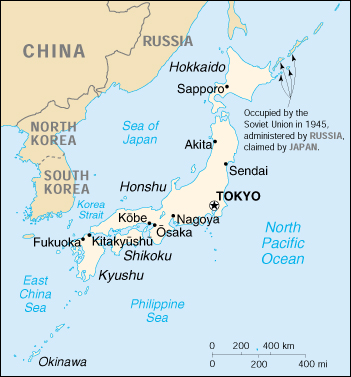 When Haruo was in his fourth year of the school he joined the
Gliders flying club, as the school owned a primary glider. Haruo's school was, and is still, located at the
foot of Mount Komaki which is no more than some 300 feet
high, a large hill like mountain. Mount Komaki is an old
famous historical sight where two leading warlords fought
some 450 years ago. The glider training Haruo took was partly on the school ground and other parts at a bigger
grassy ground 5 to 6 miles away from the school.
When Haruo was in his fourth year of the school he joined the
Gliders flying club, as the school owned a primary glider. Haruo's school was, and is still, located at the
foot of Mount Komaki which is no more than some 300 feet
high, a large hill like mountain. Mount Komaki is an old
famous historical sight where two leading warlords fought
some 450 years ago. The glider training Haruo took was partly on the school ground and other parts at a bigger
grassy ground 5 to 6 miles away from the school.
This was the beginning of the end, so to speak, for Haruo
and his father. Haruo decided that he will definitely
become a flyer and nothing else. His father was so
disappointed and became furiously mad. His father told
Haruo that the family will not spend one yen (a single
penny) on him if he wants to be airplane rider ((an old
way of describing pilot)) and, worse yet, the father wants
to disinherit Haruo if he insists pilot as a career.
Haruo's mother begged her husband to forgive Haruo, at
least forget the disinherit from the family.
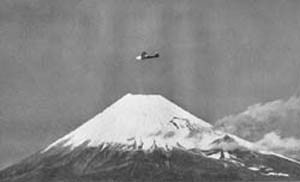 A glider near Mount Fujiyama. The first Japanese designed standardized primary glider was flown on May 11, 1930, at the Tokorozawa Army Airfield by Bunzaburo Kataoka.
It was designed and built by Testukichi Isobe. The flight lasted about five seconds and the machine with its pilot glided about 80 metres. A few months later, the first gliding club was formed in Japan.
A glider near Mount Fujiyama. The first Japanese designed standardized primary glider was flown on May 11, 1930, at the Tokorozawa Army Airfield by Bunzaburo Kataoka.
It was designed and built by Testukichi Isobe. The flight lasted about five seconds and the machine with its pilot glided about 80 metres. A few months later, the first gliding club was formed in Japan.
Haruo, in the meantime, had to find ways to study to
become pilot without spending much money. Japan, unlike
today, was fairly poor country in those days and to be
able to become a pilot was a big job and expensive to learn.
Either you were born into a very rich family or you could never
make it unless you joined the military. You had to passed the tough exams
for military academy or naval academies to become
flying cadet. Haruo first aimed at the Naval academy and
received its exam. While he passed the exams with a pretty
good score, he was turned down because of "beriberi" that
he was suffering from at the time.
Just as Haruo was graduating from the middle school, in
March, 1938, the Government announced it was establishing a civilian
pilot training program, fully supported by the Government.
Being a developing country in the aeronautical field, Japan was
in need to quickly train as many pilots as possible just like the
Western countries.
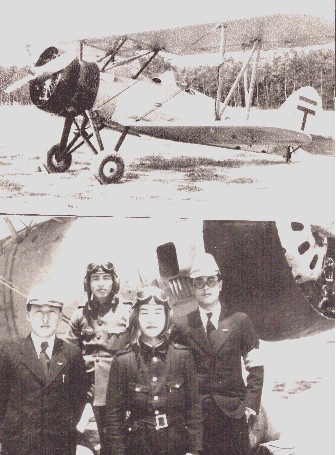 The secondary trainer used by the Civilian Pilot Training facility at Yonago pilot traing school. The tail marking is that of the Postal Department. In the photos stands the assistant instructors and students. Haruo stands in the front and on the left with student Kawada at the right.
The secondary trainer used by the Civilian Pilot Training facility at Yonago pilot traing school. The tail marking is that of the Postal Department. In the photos stands the assistant instructors and students. Haruo stands in the front and on the left with student Kawada at the right.
Tachikawa Ki-9 Akatombo (Red Dragonfly) Code Name: Spruce Design Bureau: Tachikawa Hikoki K.K. Manufacturer: Tachikawa Hikoki K.K.; Type: basic trainer Crew: two Engine: one Hitachi Ha-13a nine-cylinder air-cooled radial engine, rated at 350 hp Max speed: 149 mph Dimensions: wingspan 33 feet, 10 inches; length 24 feet, 8 inches; height 9 feet, 10 inches Weight: empty 2,238 lbs; loaded 3,142 lbs Armament: none
The timing was as such that Japan had awakened
to aeronautics as a Japanese plane named "Kamikaze"
made a world record in flying from Tokyo to London in 1937,
and twin-engine plane called "Nippon" also set another
world record by making round the world trip in 1939. Haruo's hero definitely was the pilot of "Kamikaze" The pilot's name was Iinuma, and
flight engineer was Tsukagoshi, both at the time were
employees of Asahi Newspaper.
 The Kamikaze ( Divine Wind) later became a successful recon aircraft as the KI-15 Karigane (Wild Goose) Its allied code name was Babs. It was this type aircraft that spotted the British naval task force off the Malayan coast. This led to the torpedoing and sinking of the battleship HMS Prince of Wales and the battle cruiser HMS Repulse later that same day.
The Kamikaze ( Divine Wind) later became a successful recon aircraft as the KI-15 Karigane (Wild Goose) Its allied code name was Babs. It was this type aircraft that spotted the British naval task force off the Malayan coast. This led to the torpedoing and sinking of the battleship HMS Prince of Wales and the battle cruiser HMS Repulse later that same day.
 L3M1 Mitsubishi Twin-Engined Transport. Greater Japan Air Lines (Dai Nippon Koku K.K.) used most of these planes, but this version is best known for a number of prewar goodwill flights. J-BACI, named Nippon, flew around the world on August 29, 1939, and ended successfully back in Japan on October 20, a distance of 32,850 miles in 194 actual flight hours. This aircraft was also used as a bomber with the Allied code name Nell. It was the Nell that was responsible for the sinking of the HMS Repulse and Prince of Wales. The first battleships truly sunk solely by aircraft.
L3M1 Mitsubishi Twin-Engined Transport. Greater Japan Air Lines (Dai Nippon Koku K.K.) used most of these planes, but this version is best known for a number of prewar goodwill flights. J-BACI, named Nippon, flew around the world on August 29, 1939, and ended successfully back in Japan on October 20, a distance of 32,850 miles in 194 actual flight hours. This aircraft was also used as a bomber with the Allied code name Nell. It was the Nell that was responsible for the sinking of the HMS Repulse and Prince of Wales. The first battleships truly sunk solely by aircraft.
With the new program of bringing up new and fresh civilian
pilots, the Government recruited, in the first year, 120
students. Just for 120 seats some 11,000 young men from
all over Japan applied, or close to a 92 to 1 ratio. It
indicated how airplane fever prevailed among young
generation at that time. The training facilities were
called the Postal Department Aircraft Pilot Training School.
Haruo was admitted to one of the schools and received
pilot training for 12 solid months, flying everyday.
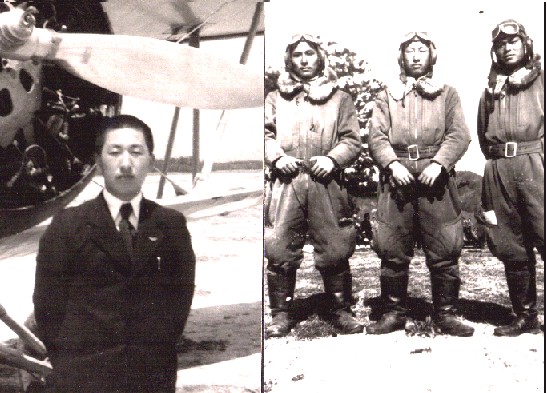 Haruo in front of a KI-9 and Haruo center with Kurita at left and Yoneda at right as Assistant instructors before the war and military service. Haruo upon completing intensive 12-month pilot training class in
March, 1939, Haruo remained at Yonago Pilot Training
School as an assistant instructor. An 18-year-old flying
instructor! It is well indicative of the situation in
Japan at the time, how scarce pilots were, (and how talented Haruo must have been.)
Haruo in front of a KI-9 and Haruo center with Kurita at left and Yoneda at right as Assistant instructors before the war and military service. Haruo upon completing intensive 12-month pilot training class in
March, 1939, Haruo remained at Yonago Pilot Training
School as an assistant instructor. An 18-year-old flying
instructor! It is well indicative of the situation in
Japan at the time, how scarce pilots were, (and how talented Haruo must have been.)
Spending a happy 12 months, not only flying airplanes
everyday by himself but also teaching young men of the
same generation how to fly. It must have been the height
of Haruo's life as the every letter he wrote to his family
during this period was with a full of joy, so his father
remembered. Haruo's friends also remember their happy
discussions with the dreams of one day flying the skies of
the world as pilots of airliners with many passengers on
board.
Haruos's friend Mr Shuho Kurita
would survive the war to realize that dream for them both as a pilot for JAL.
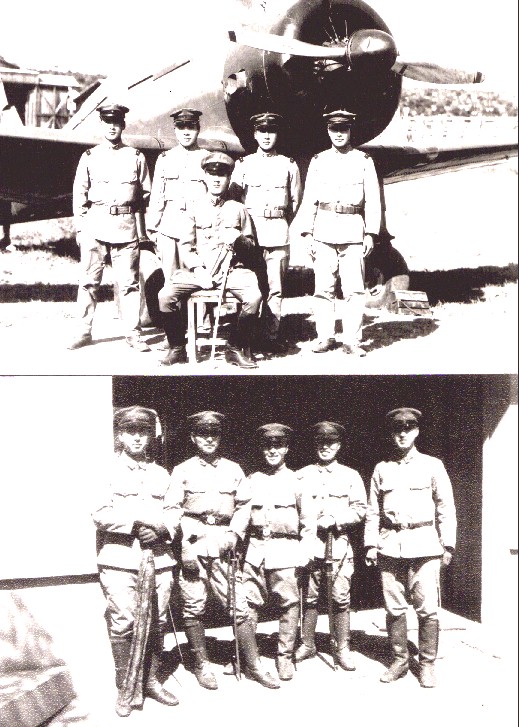 Flying cadets under Army training. Haruo standing 2nd from the right before the Army KI-55. Cadets close to graduation are allowed to wear the sword and their apprentice uniforms. Haruo stands on the far left.
Flying cadets under Army training. Haruo standing 2nd from the right before the Army KI-55. Cadets close to graduation are allowed to wear the sword and their apprentice uniforms. Haruo stands on the far left.
Tachikawa Ki-55 Codename: Ida Type: Two Seat Army Co-Operation & Advanced Trainer Crew: Pilot & Trainee/Observer/Gunner sitting in tandem. Design: Tachikawa Hikoki KK Design Team Manufacturer: Tachikawa Hikoki Kabushiki Kaisha in Tachikawa Powerplant: One 510 hp Hitachi Ha-13a 9-cylinder air-cooled radial engine. Performance: Maximum level speed 216 mph at 5,905 ft. service ceiling 26,740 ft. Range: 767 miles on internal fuel. Weight: Empty 2,749 lbs with a maximum take-off weight of 3,660 lbs Dimensions: Span 38 ft 8 1/2 in. length 26 ft 3 in. height 11 ft 11 1/4 in; wing area 215.29 sq ft
In April of 1940, Haruo, surprisingly, enlisted to join
the Army as flying officer cadet, something similar to
ROTC duty, to become a flying officer after 12-month
military training. 1940 was the year that Japan had
already been in war with China for more than 2 years, and
the international situation surrounding Japan was
worsening. The Army needed junior flying officers so bad
that civilian trained pilots were on their target list. They
were young, well trained not only in piloting technique but
also posessed navigation skills so that they can be manned as front
line pilot junior officers almost instantaneously.
 A Japanese recruiting poster from the 1940's
A Japanese recruiting poster from the 1940's
So came the fateful May, 1940, and Haruo, together with a
few of his good friends from the same school, enrolled the
Army at the military installation, Kashiwa Air Base in Chiba Prefecture. Haruo started to go thru the military training as a
flying cadet. Training the flying cadets, the army had a
system of moving the cadets from one air base to another
every two months so that they can be trained by different
instructors with different type of aircraft.
Haruo's father, in the meantime, was happy to see that his
son is going to become an officer in the Army. Ordinary
Japanese people, in those days, still had SAMURAI complex
and to become a soldier, especially officers, was a pride
and honor. Coming from peasant family, it is
understandable that Haruo's father felt honored about his
son becoming an officer in the Army. Possibly losing the
son in the war didn't even occurred in the mind of Haruo's
father. Toshiyki heard from many vets only after the war how
harsh it was to be trained as soldiers, both in army and
navy.
However, his brother never told his family of
any hardships he experienced in the army while going thru
the training period of 12 months. Probably because he was
undergoing reserve officers' training program and, for the
army, trained pilot like him were very rare and valuable at
the time.
So Haruo's military career had begun.
While moving one place to another, military rank goes up
- private to PFC to corporal, etc., till final rank of
first sergeant, or in the case of flying cadet it was
called an apprenticeship and Haruo was permitted to wear a saber.
Haruo visited his home for three-day vacation when he
became apprentice.
 Haruo's final training base was Kikuchi air base in
Kyushu where he received training for dive-bombing using
Ki-30 type 97 single-engine light bomber. The training
must not have been too harsh, and definitely not to
lonesome and difficult as Haruo, for all this time, has been
with his best friend from the days of the Yonago
Civil Pilot Training School, Shuho Kurita who survived the
war and later became pilot for Japan Air Lines.
Haruo's final training base was Kikuchi air base in
Kyushu where he received training for dive-bombing using
Ki-30 type 97 single-engine light bomber. The training
must not have been too harsh, and definitely not to
lonesome and difficult as Haruo, for all this time, has been
with his best friend from the days of the Yonago
Civil Pilot Training School, Shuho Kurita who survived the
war and later became pilot for Japan Air Lines.
Allied Code named Anne the Mitsubishi KI-30 was the first Japanese design to mount a twin-row radial engine as well as having an internal bomb bay, flaps and constant-speed propelllor, the Ki-30 was an integral part of the Japanese Army's modernization program in 1935. Available in sufficient numbers, the type played a large part of the Sino-Japanese war. The Ki-30 supported the advance into the Philipines in 1942 but were subsequently withdrawn from front-line service.
In late May, 1941, Haruo and his fellow cadets completed the
12-month military pilot training program and now were ready to
be commissioned. As it was in many military organizations, when you
become a commissioned officer all your gear must be
purchased as private property. Haruo purchased his pistol
(Japanese model 14), binoculars, officer's leather bag,
etc., etc. His father purchased Samurai sword for Haruo
as a gift for becoming an officer of the army. Haruo's
father was so proud of his son.
 A Japanese pilots survival kit (note the whistle and fishing line )
A Japanese pilots survival kit (note the whistle and fishing line )
As the cadets finished training, each received
assignments. Haruo's friend Kurita received orders to go
to the Army's Kumagaya Flying School as flying instructor
for rosy-cheeked volunteer junior soldiers. Other cadets
received assignments to go to a fighter squadron, and
others were assigned to reconnaissance group, bomber
squadron, etc. Haruo was assigned to 27th Sentai which,
at the time, was stationed at an air base in Central
China.
Before starting out to join the Sentai, Haruo came home
for two-day vacation to visit his mother at the hospital
in Nagoya. His mother had been seriously ill for more
than six months. It was doubtful that his mother could
have recognize Haruo when he visited. Haruo then visited
Yonago City, the town he spent his days of youth
full of joy, and where his loving girl friend lived.
After spending few days of what was to become his final
vacation in his homeland, Haruo took military plane out
from Yonago International Airport ((Yonago was one of the
few international airports at the time because of
logistical location - close to Korean peninsula across
Japan sea)) to join 27th Sentai which, at the time, had
already moved to Poyun airfield outside of Kuangtung.
 Sonia's somewhere over the front, unit unknown
Sonia's somewhere over the front, unit unknown
Arriving at Po-yun air base, Kuangtung, Southern China,
in June, 1941, newly commissioned 2nd Lt Haruo Matsuura
reported to the Sentai Commander, Lt Col Hajime Sakurai,
at the Headquarters of 27th Sentai. The commander
assigned Haruo to 3rd Chutai (Company), company commander
of which was Capt Rokuro Seto. The 27th Sentai was
originally established in Manchukuo in 1937, equipped with
type 97 light bomber (Ki-30), and then type 98 light
bomber (Ki-32). When Haruo arrived, the Sentai was in the
process of moving its base to Tien-he airfield, which was
also in Kuangtung area, and their equipment had already
been changed to type 99 ground assault plane (Ki-51), much
better in performance compared those two predecessors.
 At Tien-he airfield, Haruo saw many types of planes with
a quite few Sentais stationed. The famous 64th Sentai
(Katoh Hayabusa Sentohtai) was there also and they were in
intense combat training with their new Ki-43 fighter.
Japanese Army Air Force was already gathering its top
notch air powers at Tien-he in order to get ready for
planned invasion into the South. Haruo met 1st Lt Rokuzoh
Katoh of 64th Sentai who was also from Yonago Civil Pilot
Training School working as an assistant instructor the
same time Haruo worked. Lt Katoh joined the army for
flying cadet one term before Haruo did. They must have
had a lot to talk about the good times they spent in
Yonago.
At Tien-he airfield, Haruo saw many types of planes with
a quite few Sentais stationed. The famous 64th Sentai
(Katoh Hayabusa Sentohtai) was there also and they were in
intense combat training with their new Ki-43 fighter.
Japanese Army Air Force was already gathering its top
notch air powers at Tien-he in order to get ready for
planned invasion into the South. Haruo met 1st Lt Rokuzoh
Katoh of 64th Sentai who was also from Yonago Civil Pilot
Training School working as an assistant instructor the
same time Haruo worked. Lt Katoh joined the army for
flying cadet one term before Haruo did. They must have
had a lot to talk about the good times they spent in
Yonago.
27th Sentai, headed by Lt Col Sakurai, was a part of 3rd
Air Group which consisted of two light bomber Sentais
(equipment was twin-engine Ki-48), a fighter Sentai
(Ki-27 & Ki-43 fighters), a command reconnaissance Sentai
and the 27th. 3rd Air Group came under 3rd Army Air
Command which, later, deployed for entire Southeast Asian
front.
In late October, 1941, the commander of 3rd Air Group,
Major General Saburo Endoh, received an order to have his
Sentais move advance to Hanoi, Vietnam (then French
Indo-China). The deployment operation was to be carried
out with utmost secrecy as the army didn't want the world
to know. 3rd Army Air Command had two heavy-bomber groups
under the command besides the 3rd Air Group. The order
was the whole 3rd Army Air Command troops were to move
forward to Hanoi starting mid November.
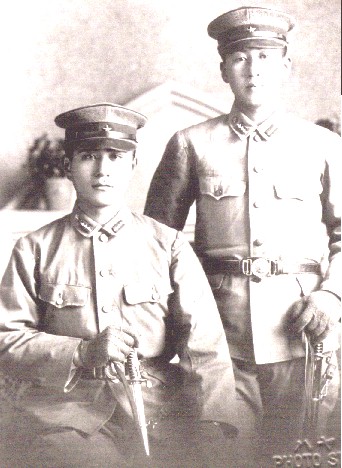 Wearing their apprentice Army uniforms Haruo and his best friend Kurita has a memorial photo taken at a photo studio in KUmamoto, Kyushu, in May of 1941. Kurita is sitting and Haruo is standing.
Wearing their apprentice Army uniforms Haruo and his best friend Kurita has a memorial photo taken at a photo studio in KUmamoto, Kyushu, in May of 1941. Kurita is sitting and Haruo is standing.
While standing by for the big move southward, Haruo
accidentally, and unexpectedly, met Lt Kurita, his best
friend, who flew in to the air base on brand new type 1
fighter, Ki-43 Hayabusa. He ferried the plane to hand it
over to the 64th Sentai. Lt Kurita, as Haruo found out,
had been transfered from Kumagaya Army Flying School to
Air Force Transportation Command for plane ferrying duty.
On his arrival Kurita found, from Lt Katoh of 64th
Sentai, that Haruo was there at the air base. Lt Kurita
and Haruo enjoyed an unforgettable night at the officers'
club for an endless conversation. Both Kurita and Haruo
never dreamed of the encounter being their very last time
to see each other.
 On November 16, 1941, the whole 3rd Air Group planes took
off from the air base and headed for Hanoi, French
Indo-China. In top secret, the staff at the headquarters
knew that the war is going to be expanded to something
very big. They only did not know the exact date of
invasion operation. Attempting to cover up planned
invasion plan, men of the 3rd Air Force Command were given
liberty to enjoy Hanoi, known to be the Paris of Asia.
Another covering up operation was to occasionally send
small air groups from Hanoi to attack Kunming, China, to
show as if Japanese air force had been redeployed to Hanoi
for that operation purpose.
On November 16, 1941, the whole 3rd Air Group planes took
off from the air base and headed for Hanoi, French
Indo-China. In top secret, the staff at the headquarters
knew that the war is going to be expanded to something
very big. They only did not know the exact date of
invasion operation. Attempting to cover up planned
invasion plan, men of the 3rd Air Force Command were given
liberty to enjoy Hanoi, known to be the Paris of Asia.
Another covering up operation was to occasionally send
small air groups from Hanoi to attack Kunming, China, to
show as if Japanese air force had been redeployed to Hanoi
for that operation purpose.
In the morning of December 4, 1941, the planes of the 3rd
Army Air Force Command departed Hanoi to assemble at
Konpong-Chhunang (Cambodia) to get ready for invasion.
Planes with long-range flying capability took straight
flight to Konpong-Chhunang and others flew via Tourane
(Vietnam) for refueling. They all, however, had very
difficult time getting Kongpong-Chhunang because of the
inclement weather prevailed. The flight of 8 Ki-51s from
27th Sentai, headed by Sentai Commander, Lt Col Sakurai,
became missing in the ill weather and later found to be
all lost. Haruo's Sentai met with ill fate before
going into the big operation.
 The invasion operation began December 8, 1941, Japan
Standard Time, 27th Sentai Ki-51s started to fly missions
to support ground invasion forces advancing from Songkhla
and Pattani (Thailand), and those troops landed at the
beach of Kota Bahru. The invasion ground troops, 25th
Army, consists of Imperial Guard Division, 5th and 18th
Divisions, under the command of Lt Gen Tomoyuki Yamashita.
As the invasion troops advance, siege and capture enemy
airfields, air groups move in. Kota Bahru, Penang,
Taiping, Ipoh and Kuala Lumpur. 3rd Company of 27th
Sentai which Haruo was attached to had an aircraft
maintenance chief, 1st Lt Yukio Uchida, who was Haruo's
senior and really good person taking care of Haruo's Ki-51
so that Haruo can always fly his plane without any
problems. 27th Sentai continued sorties for strafing
mission to support advancing ground troops. General
Yamashita personally visited General Endoh, the 3rd Air
Group Commander, at Kuala Lumpur airfield asking him to
have his Ki-51s to cover the ground troops wherever and
whenever possible.
The invasion operation began December 8, 1941, Japan
Standard Time, 27th Sentai Ki-51s started to fly missions
to support ground invasion forces advancing from Songkhla
and Pattani (Thailand), and those troops landed at the
beach of Kota Bahru. The invasion ground troops, 25th
Army, consists of Imperial Guard Division, 5th and 18th
Divisions, under the command of Lt Gen Tomoyuki Yamashita.
As the invasion troops advance, siege and capture enemy
airfields, air groups move in. Kota Bahru, Penang,
Taiping, Ipoh and Kuala Lumpur. 3rd Company of 27th
Sentai which Haruo was attached to had an aircraft
maintenance chief, 1st Lt Yukio Uchida, who was Haruo's
senior and really good person taking care of Haruo's Ki-51
so that Haruo can always fly his plane without any
problems. 27th Sentai continued sorties for strafing
mission to support advancing ground troops. General
Yamashita personally visited General Endoh, the 3rd Air
Group Commander, at Kuala Lumpur airfield asking him to
have his Ki-51s to cover the ground troops wherever and
whenever possible.
In the early morning of January 19, 1942, Haruo led two
other Ki-51s to go for strafing mission in the Muar area
where the ground troops were fiercely fighting. Flight
leader Haruo on the control with Sergeant Shimomura in the
back seat as gunner, the wingman Sergeant Masuda on the
control with Sergeant Ishizuka the gunner, and the pilot
Sergeant Kishida and Corporal Abu, the gunner, on the
third plane, three Ki-51s took off for the mission.
 As told to the family by letters from the Company Commander, Capt
Seto reporting the death of Haruo, a few survived vets
from 27th Sentai.
As told to the family by letters from the Company Commander, Capt
Seto reporting the death of Haruo, a few survived vets
from 27th Sentai.
As the strafing mission was accomplished, Haruo and two
other Ki-51s started to head back to the base, Kuala
Lumpur. Just as they were turning away from the scene
they spotted six Buffalo fighters coming at them firing
their guns and nine airplanes went into dog fight. Haruo's wingman Sergeant Masuda's Ki-51 went down in fire
ball. Haruo's gunner Sergeant Shimomura got hit and
instantaneously died on board. Trying to get out of the
fight, Haruo was on the stick maneuvering his Ki-51 but
came the slugs hitting Haruo on his head and the chest,
and the plane went down. Remaining Ki-51 with Sergeant
Kishida and Corporal Abu got hit really bad also with
slugs piercing the plane's lubricating oil tank. Kishida
and Abu, then, spotted several Ki-43s appeared in the
scene in rescue of the Ki-51s. With oil leaking pretty
bad, Kishida maneuvered the plane to bring her back to the
base and reported what had happened.
Haruo and three other airmen died bravely
fighting for their country. As was Japanese cusom they all were posthumously
promoted in their ranks immediately, and so this was announced by
the Commanding General. ( Photo USA Buffalo's peeling off not 453 squadron, Scene as probably seen by Hauro. Allied pilots often mistook the KI-51 for the KI-27 Nate due to the fixed undercarrige and reported mixing with fighters as the Japanese pilots would turn into them aggressively.)
 A photo of the crash site taken by a member of the search party. The grave post states "The site of Matsuura's plane crash January 19 1942. W/O Nagashima head of the search party stands in the photo. On 24th of January, the 27th Sentai
sent out a team of eight soldiers, headed by Warrant
Officer Nagashima, to recover and evacuate bodies of those
four flyers. When the team arrived at the scene of the
battle where the planes crashed. They found that bodies of
Haruo and his gunner had already been recovered and
cremated by the staff doctor of Imperial Guard Division,
and the division troops carried the bones and ashes with
them in their march forward. The corps recovery team
followed Imperial Guard Division troops and caught up with
them and received the remains. The team, however, could
never find bodies of the wingman's pair. War - horrible
crime that foolish mankind commits. They never learn from
the history that war can only bring misery.]
A photo of the crash site taken by a member of the search party. The grave post states "The site of Matsuura's plane crash January 19 1942. W/O Nagashima head of the search party stands in the photo. On 24th of January, the 27th Sentai
sent out a team of eight soldiers, headed by Warrant
Officer Nagashima, to recover and evacuate bodies of those
four flyers. When the team arrived at the scene of the
battle where the planes crashed. They found that bodies of
Haruo and his gunner had already been recovered and
cremated by the staff doctor of Imperial Guard Division,
and the division troops carried the bones and ashes with
them in their march forward. The corps recovery team
followed Imperial Guard Division troops and caught up with
them and received the remains. The team, however, could
never find bodies of the wingman's pair. War - horrible
crime that foolish mankind commits. They never learn from
the history that war can only bring misery.]
EPILOGUE
Haruo's soul with bone and ash came back home late March 1942
and the town of Komaki held grand funeral service.
Haruo's father, never got back to himself until the day he
died. The death of Haruo was such a great loss to him. He
died March, 1953, and is finally together again with his
wife and his loving proud son, Haruo.
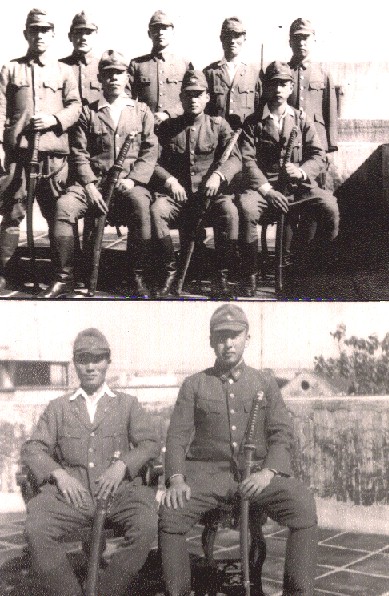
Staff officers of the 27th Sentai. All the officers were senior to Haruo. Sitting in the center is Company Commander, Captain Seto. Front right is 1st Lt. Maruyama, the senior officer sitting left is 1st Lt. Bannai, standing far left is 1st Lt. Kamiyama, standing second from right is 1st. Lt. Uchida, and standing far right is 2nd Lt. Matsuura the fresh junior officer of the company. The photos taken at the airbase outside fo Kuangtung China shows Lt. Haruo Matsuura with 1st Lt. Uchida, 3rd Company Maintenance chief. This was the very first photo of Haruo in his officers uniform proudly holding the sword his father presented him with upon becoming an officer.
 2nd Lt. Haruo was attached to Imperial Japanese
Army Air Force, 27th SENTAI (Flight Regiment), 3rd
Company, engaged in Malaya campaign when he was shot down by
Royal Air Force Buffalo fighters
while on a strafing mission the morning of January 19, 1942.
2nd Lt. Haruo was attached to Imperial Japanese
Army Air Force, 27th SENTAI (Flight Regiment), 3rd
Company, engaged in Malaya campaign when he was shot down by
Royal Air Force Buffalo fighters
while on a strafing mission the morning of January 19, 1942.
From Australian sources their side of the fight. At 6:45 AM a flight of 8 RAF Buffalos departed Sembawnag Singapore to escort 3 Glen
Martins and 5 Whiraways to carry out an attack on Muar where the ground
battle was going badly for the defenders. Near the Muar-Gemas road the
Buffalo's sighted what they at first believed to be 3 single seat type 96 aircraft. In fact, these were
Ki-51's of the 27th Senti. Flight Lt. R. Kirkman of A flight shot down the
first while his squadron mates pursued the other two bringing down a second
aircraft before the Ki-43's escort fighters of the 59th Senti could intervene. The
surviving Ki-51 made it back to report on the fate of the others. The attacking unit
was an Australian one, the 21RAAF/453 Squadron.
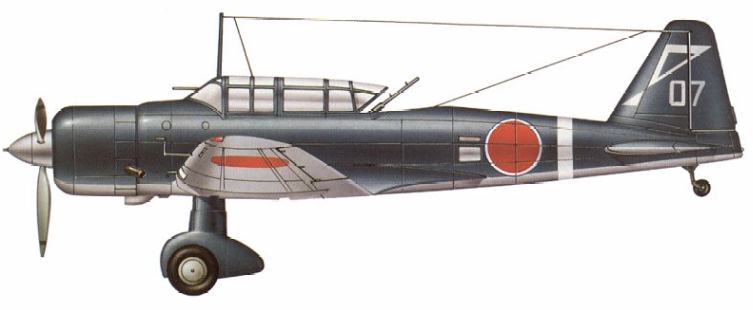
Crew: 2, engine: 1 x Army Type 99 Mod. 2, 705kW, wingspan: 12.1m, length: 9.21m, height: 2.73m, wing area: 24.02m2, start mass: 2798-2920kg, empty mass: 1873kg, max speed: 424kph, ceiling: 8270m, range: 1060km, armament: 3 x 7.7mm MGs, 200-300kg of bombs
2nd Lt., JIAAF (Reserve) Haruo Matsuura
flew a KI-51 simiar to this. The white circle around the hinomaru appeared in 1943. Artist drawing courtesy of TC Kinney's The Flightline WWII Aviation Archive
Flight Lt. Kirkman probably flew one of these 453 squadron Buffalo's that morning.
 .....
.....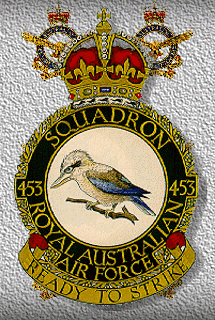
 LIFE IN JAPAN 1942-45
LIFE IN JAPAN 1942-45 
War posters in Japan were no different than those in the USA. Keep Quiet and Buy Bonds.
I would like to thank Mr. Toshiyuki Matsuura for sharing the story about his brother. I asked him about life in Japan in the intervening years and what became of the family. Below are answers to qustions asked in early May of 2004.
Toshiyuki was born
in 1932, the year Manchukou (Manchuria) was declared as
sovereign country. He was was much too young to be in
military and was a mere 10 years when Haruo died, and 13 when the
war ended. For him, after his brother, his heroes were military flyers of the time. Lt Col Katoh, commanding 64th Sentai with Ki-43 Hayabusa,
fighting in Malay and Burma air battles was one hero as a movie of him and his squadron was produced during teh war . Mr. Matsuura gratiously shared something of the familys and his life in the years after Haruo's death.
Fortunately the Matsuura family lived on the outskirts of
Nagoya City and their little town never was bombed though Toshiyuki had seen many sad scenes. I asked him about life in Japan during and after the war. His other brother was one of the very few who amazingly survived the war as a crewman of a Japanese submarine. The post war years were hard with other family members dying at much to early ages. Most of the war ravaged countries ( with the exception of the USA )were still recovering in the early 1950's. As he said in one of his posts. "Nobody wins war it only brings sadness on both sides."
Mr. Matsuura:
Food was our biggest concern and we, young
boys and girls, were always hungry not only during the war
but also for three or four years after the war. The food
situation became a little better only in 1950's. As you
imagined, because of my father's previous business
contacts, farmers (by this time he had already retired
from the business), he'd somehow manage to acquire food,
rice mainly, for the family.
MY SISTERS: I had three sisters, two above me and one
younger. Older sister had been married to a a man running
a trucking business with one three-wheeled truck that he
owned. They were living in Nagoya and their house was
burnt down by B-29 night raid, in early 1945. They moved to Komaki, close to our house. She passed away in 1949
from illness. Another sister married to an army officer
(W/O) stationed in Manchuria. They had the wedding ceremony
in Japan and went off to Manchuria. In mid 1945 Warrant
officer Goro Miwa and his family, my sisters and little
baby girl, moved to military station near Urusann, South
Korea. My younger sister had already been with W/O Miwa's
family as they took custody of her because she was only 6
years old and motherless. Our mother had died two months
before Haruo died in Malaya. Miwa's family got back to
Japan in September of 1945, soon after the war ended.
After returning home, my sister struggled thru a harsh life
because her business of dress-making trade was up and
down. In 1948 she died from serious illness.
My other brother Masaharu Matsuura,
was born in October, 1926, and volunteered for the navy in
1944. After going thru the infamous and
very harsh freshmen's training at the training facility in
Kure, Hiroshima, he became radio operator on a submarine.
My father and I took a long trip by train to see him as
his commanding officer wrote to my father that my brother
had submitted a voluntary petition to be appointed as
submarine "Kamikaze" crew.

[Kaitens were converted torpedoes, stretched to include a tiny cabin to carry a one or two man crew depending on the model. With an up to 4000 lb warhead it could sink a battleship. They were carried piggyback aboard mother submarines. At least three could be carried at a time on one mother sub, some I-boats carried as many as six Kaitens. The kaitens maximum depth was 264 feet, which placed that limit on the mother boat. The fleet tanker Mississinewa and the destroyer escort Underhill were the only confirmed ships sunk. A few other ships were damaged. In the Japanese human torpedo program, eight mother submarines and almost 900 lives were lost. ]
My father was furious of this
but went to see him anyway. I never forget the night my
father and the brother had a steaming quarrel. My father,
already at that time, felt that Japan will definitely lose
the war and to volunteer to die is so foolish. My
brother, as is with many youngmen of those days, strongly
believed in the god devine Japanese Empire, and to speak
as his father spoke is treason. I
guess I was much too young, spiritually, to judge who was
right. My brother, in the meantime, luckily got out of the
mission as the war ended.  While he was in training,
though, his submarine was strafed by U.S. fighter from
carrier (either Hell Cat or Corsair) and he got hit by bounced slug of l2.7mm gun. He came home
with bandage around the neck. He suffered from it almost
for 6 months before wound healed. After he came home he
tried all kinds of work without much success, and died
from asthma just as he was approaching his 60th birthday.
While he was in training,
though, his submarine was strafed by U.S. fighter from
carrier (either Hell Cat or Corsair) and he got hit by bounced slug of l2.7mm gun. He came home
with bandage around the neck. He suffered from it almost
for 6 months before wound healed. After he came home he
tried all kinds of work without much success, and died
from asthma just as he was approaching his 60th birthday.
Only three days after we came home from Kure, the
A bomb hit Hiroshima. My father was so right. As a
matter of fact, My father, as I can remember now, really
became anti-war ever since Haruo died in the battle. In
fact, even at home he spoke of anti-war feelings and I was
so worried that someone may hear him say so. We had no freedom of speech, and the people were under severe control of the Special Police.
The town of Komaki continued to see the expansion of the war. In 1943, the army decided to build an airfield
for defense of Nagoya which, at the time, was the biggest
aircraft industrial city with the loction of the Mitsubishi aircraft plants.
 The next year, 1944, the construction of the airfield was
completed and army placed Fighter squadron, 55th Sentai,
in defense of Chubu legion inclusive of Nagoya. Ki-61 was
used by the 55th Sentai. The air base also housed
aircraft ferrying group on the other side of the field
where they carry out final service and maintenance on new
Ki-61s coming off from production lines of Kawasaki
aircraft plant in Gifu, approximately 15 miles away where
Kagamigahara army arsenal air base was, and these new
Ki-61s were ferried to Southern front via Kyushu, Okinawa,
Taipei and Philippines.
The next year, 1944, the construction of the airfield was
completed and army placed Fighter squadron, 55th Sentai,
in defense of Chubu legion inclusive of Nagoya. Ki-61 was
used by the 55th Sentai. The air base also housed
aircraft ferrying group on the other side of the field
where they carry out final service and maintenance on new
Ki-61s coming off from production lines of Kawasaki
aircraft plant in Gifu, approximately 15 miles away where
Kagamigahara army arsenal air base was, and these new
Ki-61s were ferried to Southern front via Kyushu, Okinawa,
Taipei and Philippines.
 The poster exhorts workers to produce more for the war effort.
The poster exhorts workers to produce more for the war effort.
My sisters never had to work in the
factories, two were married and other was too young.
Instead, I was in that right age where I had to be out in
some military facilities as the Government, in late 1943,
I believe, passed the law for people above 15 to
be mobilized to work in munitions facilities. This was
the time that waiver for military duty for those universities and college students was lifted. The
mobilization for munitions factories stretched into school
kids of 12 and above, 7th graders. For me it was very
lucky that I was sent to work at Komaki Air Base, the army
airfield. It was true that there were many component factories scattered out in suburban areas. In many cases they used
farmers barn, small farming machine and tool storing shack, and so forth.
I asked about the training of civilians with spears to repel the invasion forcs as there are pictures of this in many history books.
Mr. Matsuura:
Now that you look back with realistic eyes, bamboo spears
to defend against the invasion of troops with modern war equipment is
a big laugh. In those days, however, one was expected to believe
what the leaders told you. I was rather
rebellious, in a way, that I looked at them with a laugh
which, naturally, I did not show. The reason for my
behavior was because my father was a realist and I was
looking at modern airplanes everyday at the air base I was
sent out to under the "mobilize kids" program.  I just
couldn't figure it out as we had seen hundreds of B-29s almost
everyday over the skies of Japan, and many fighters such
as P-51s, F6Fs and F4Us. that we were expected to repel an invasion with spears.
I listened the Emperor's announcement, an
Imperial rescript we call it, at one of the evacuated farm
house factories. Neither I nor my fellow students understood what was said. Not only us but also the
soldiers working with us didn't understand. The words and
terms used were so authentic and old, even if I read it
now I would have difficulty. We were told to go home for
the afternoon and we all were glad to be able to knock off
for the day. As I came home, my father told me the war
ended.
I just
couldn't figure it out as we had seen hundreds of B-29s almost
everyday over the skies of Japan, and many fighters such
as P-51s, F6Fs and F4Us. that we were expected to repel an invasion with spears.
I listened the Emperor's announcement, an
Imperial rescript we call it, at one of the evacuated farm
house factories. Neither I nor my fellow students understood what was said. Not only us but also the
soldiers working with us didn't understand. The words and
terms used were so authentic and old, even if I read it
now I would have difficulty. We were told to go home for
the afternoon and we all were glad to be able to knock off
for the day. As I came home, my father told me the war
ended.
Our strongly
determined and hard working father, passed away in March,
of 1953. I have been with him till the moment his pulse
stopped. A few days before he died, I saw tears in his
eyes for the very first time in my life. I was sure he
was remembering Haruo, his loving and proud son. Now, I'm
happily married with a daughter and two grand daughters.
My younger sister, also, is very happy with a son and two
daughters, all married and have children. Our family had
to go through a tough life but, thanks to something up there,
the remaining members, my sister and I, are now very happy and
spending a calm life.
My thanks and appreciation to Mr. Matsuura for sharing his familys story.
E-Mail Me @
worldwar2mem@yahoo.com

Copyright © Ken Arnold 1999. All rights reserved.
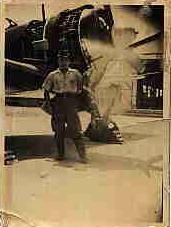 An unknown Japanese aviator in the Phillipines during WWII, The Photo is from Neil Mulhern of the 1896 Aviation battalion, provided to him by the Phillipino family who knew the airman during the war. Few of them survived the Phillipines actions of 1944/45. The aircraft behind him possibly the Hayabusa or Pergrine Falcon. Contacts with Japan have proven difficult to make. Books written purely by Japanese authors are even harder to locate. Many Japanese are reluctant to speak of the war years. It is unfortunate, as the Japanese airmen are little known or understood in this country. They fought with all the skill, courage and determination as exhibited by their opponents.
An unknown Japanese aviator in the Phillipines during WWII, The Photo is from Neil Mulhern of the 1896 Aviation battalion, provided to him by the Phillipino family who knew the airman during the war. Few of them survived the Phillipines actions of 1944/45. The aircraft behind him possibly the Hayabusa or Pergrine Falcon. Contacts with Japan have proven difficult to make. Books written purely by Japanese authors are even harder to locate. Many Japanese are reluctant to speak of the war years. It is unfortunate, as the Japanese airmen are little known or understood in this country. They fought with all the skill, courage and determination as exhibited by their opponents.
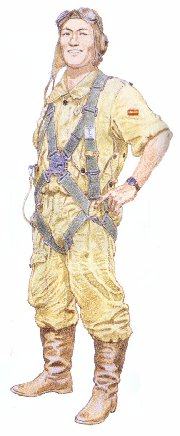 The Summer Uniform of a JAAF Pilot.
The Summer Uniform of a JAAF Pilot.
Links
 . Bye Bye Black SheepMike Kawato's life and war
. Bye Bye Black SheepMike Kawato's life and war
 Japanese Pilot Stories Lt Iki and the HMS Repulse
Japanese Pilot Stories Lt Iki and the HMS Repulse
 Avaition Archive TC Kinneys Avaition Archive Attack section.
Avaition Archive TC Kinneys Avaition Archive Attack section.
 Japanese Pilot StoriesFrom Wings of the Sun
Japanese Pilot StoriesFrom Wings of the Sun
 Japanese Aircraft in WWIIAircraft of the Japanese Airforces .
Japanese Aircraft in WWIIAircraft of the Japanese Airforces .
 Japanese Airforces LinksLots of links here to Yahoo Japan
Japanese Airforces LinksLots of links here to Yahoo Japan
 Japanese Airforces Internet Museum of K. KatohJAAF & JNAF information
Japanese Airforces Internet Museum of K. KatohJAAF & JNAF information
 Japanese Airforces KI-51 photos Site owner unknown
Japanese Airforces KI-51 photos Site owner unknown
 Arawasi Web site with great links to Japanese models, books, and links
Arawasi Web site with great links to Japanese models, books, and links
 HOBIC WEB SITE - Decals of IJAAF AND IJNAF
HOBIC WEB SITE - Decals of IJAAF AND IJNAF
 War Time Posters.
War Time Posters.
Some books on the subject


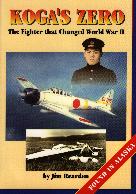




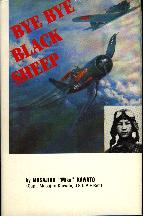
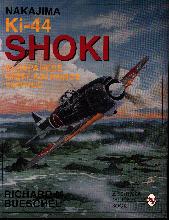

This page hosted by 
Get your own Free Home Page
 2nd Lt., Haruo Matsuura Imperial Japanese Army Airforce (Reserve)
2nd Lt., Haruo Matsuura Imperial Japanese Army Airforce (Reserve)

 ..
..  ..
..
 2nd Lt., Haruo Matsuura Imperial Japanese Army Airforce (Reserve)
2nd Lt., Haruo Matsuura Imperial Japanese Army Airforce (Reserve)

 ..
..  ..
..
 [ Photo of Mount Komaki Shrine ]
[ Photo of Mount Komaki Shrine ]  When Haruo was in his fourth year of the school he joined the
Gliders flying club, as the school owned a primary glider. Haruo's school was, and is still, located at the
foot of Mount Komaki which is no more than some 300 feet
high, a large hill like mountain. Mount Komaki is an old
famous historical sight where two leading warlords fought
some 450 years ago. The glider training Haruo took was partly on the school ground and other parts at a bigger
grassy ground 5 to 6 miles away from the school.
When Haruo was in his fourth year of the school he joined the
Gliders flying club, as the school owned a primary glider. Haruo's school was, and is still, located at the
foot of Mount Komaki which is no more than some 300 feet
high, a large hill like mountain. Mount Komaki is an old
famous historical sight where two leading warlords fought
some 450 years ago. The glider training Haruo took was partly on the school ground and other parts at a bigger
grassy ground 5 to 6 miles away from the school.  A glider near Mount Fujiyama. The first Japanese designed standardized primary glider was flown on May 11, 1930, at the Tokorozawa Army Airfield by Bunzaburo Kataoka.
It was designed and built by Testukichi Isobe. The flight lasted about five seconds and the machine with its pilot glided about 80 metres. A few months later, the first gliding club was formed in Japan.
A glider near Mount Fujiyama. The first Japanese designed standardized primary glider was flown on May 11, 1930, at the Tokorozawa Army Airfield by Bunzaburo Kataoka.
It was designed and built by Testukichi Isobe. The flight lasted about five seconds and the machine with its pilot glided about 80 metres. A few months later, the first gliding club was formed in Japan.
 The secondary trainer used by the Civilian Pilot Training facility at Yonago pilot traing school. The tail marking is that of the Postal Department. In the photos stands the assistant instructors and students. Haruo stands in the front and on the left with student Kawada at the right.
The secondary trainer used by the Civilian Pilot Training facility at Yonago pilot traing school. The tail marking is that of the Postal Department. In the photos stands the assistant instructors and students. Haruo stands in the front and on the left with student Kawada at the right.  The Kamikaze ( Divine Wind) later became a successful recon aircraft as the KI-15 Karigane (Wild Goose) Its allied code name was Babs. It was this type aircraft that spotted the British naval task force off the Malayan coast. This led to the torpedoing and sinking of the battleship HMS Prince of Wales and the battle cruiser HMS Repulse later that same day.
The Kamikaze ( Divine Wind) later became a successful recon aircraft as the KI-15 Karigane (Wild Goose) Its allied code name was Babs. It was this type aircraft that spotted the British naval task force off the Malayan coast. This led to the torpedoing and sinking of the battleship HMS Prince of Wales and the battle cruiser HMS Repulse later that same day.  L3M1 Mitsubishi Twin-Engined Transport. Greater Japan Air Lines (Dai Nippon Koku K.K.) used most of these planes, but this version is best known for a number of prewar goodwill flights. J-BACI, named Nippon, flew around the world on August 29, 1939, and ended successfully back in Japan on October 20, a distance of 32,850 miles in 194 actual flight hours. This aircraft was also used as a bomber with the Allied code name Nell. It was the Nell that was responsible for the sinking of the HMS Repulse and Prince of Wales. The first battleships truly sunk solely by aircraft.
L3M1 Mitsubishi Twin-Engined Transport. Greater Japan Air Lines (Dai Nippon Koku K.K.) used most of these planes, but this version is best known for a number of prewar goodwill flights. J-BACI, named Nippon, flew around the world on August 29, 1939, and ended successfully back in Japan on October 20, a distance of 32,850 miles in 194 actual flight hours. This aircraft was also used as a bomber with the Allied code name Nell. It was the Nell that was responsible for the sinking of the HMS Repulse and Prince of Wales. The first battleships truly sunk solely by aircraft.
 Haruo in front of a KI-9 and Haruo center with Kurita at left and Yoneda at right as Assistant instructors before the war and military service. Haruo upon completing intensive 12-month pilot training class in
March, 1939, Haruo remained at Yonago Pilot Training
School as an assistant instructor. An 18-year-old flying
instructor! It is well indicative of the situation in
Japan at the time, how scarce pilots were, (and how talented Haruo must have been.)
Haruo in front of a KI-9 and Haruo center with Kurita at left and Yoneda at right as Assistant instructors before the war and military service. Haruo upon completing intensive 12-month pilot training class in
March, 1939, Haruo remained at Yonago Pilot Training
School as an assistant instructor. An 18-year-old flying
instructor! It is well indicative of the situation in
Japan at the time, how scarce pilots were, (and how talented Haruo must have been.)
 Flying cadets under Army training. Haruo standing 2nd from the right before the Army KI-55. Cadets close to graduation are allowed to wear the sword and their apprentice uniforms. Haruo stands on the far left.
Flying cadets under Army training. Haruo standing 2nd from the right before the Army KI-55. Cadets close to graduation are allowed to wear the sword and their apprentice uniforms. Haruo stands on the far left.  A Japanese recruiting poster from the 1940's
A Japanese recruiting poster from the 1940's  Haruo's final training base was Kikuchi air base in
Kyushu where he received training for dive-bombing using
Ki-30 type 97 single-engine light bomber. The training
must not have been too harsh, and definitely not to
lonesome and difficult as Haruo, for all this time, has been
with his best friend from the days of the Yonago
Civil Pilot Training School, Shuho Kurita who survived the
war and later became pilot for Japan Air Lines.
Haruo's final training base was Kikuchi air base in
Kyushu where he received training for dive-bombing using
Ki-30 type 97 single-engine light bomber. The training
must not have been too harsh, and definitely not to
lonesome and difficult as Haruo, for all this time, has been
with his best friend from the days of the Yonago
Civil Pilot Training School, Shuho Kurita who survived the
war and later became pilot for Japan Air Lines.
 A Japanese pilots survival kit (note the whistle and fishing line )
A Japanese pilots survival kit (note the whistle and fishing line )  Sonia's somewhere over the front, unit unknown
Sonia's somewhere over the front, unit unknown  At Tien-he airfield, Haruo saw many types of planes with
a quite few Sentais stationed. The famous 64th Sentai
(Katoh Hayabusa Sentohtai) was there also and they were in
intense combat training with their new Ki-43 fighter.
Japanese Army Air Force was already gathering its top
notch air powers at Tien-he in order to get ready for
planned invasion into the South. Haruo met 1st Lt Rokuzoh
Katoh of 64th Sentai who was also from Yonago Civil Pilot
Training School working as an assistant instructor the
same time Haruo worked. Lt Katoh joined the army for
flying cadet one term before Haruo did. They must have
had a lot to talk about the good times they spent in
Yonago.
At Tien-he airfield, Haruo saw many types of planes with
a quite few Sentais stationed. The famous 64th Sentai
(Katoh Hayabusa Sentohtai) was there also and they were in
intense combat training with their new Ki-43 fighter.
Japanese Army Air Force was already gathering its top
notch air powers at Tien-he in order to get ready for
planned invasion into the South. Haruo met 1st Lt Rokuzoh
Katoh of 64th Sentai who was also from Yonago Civil Pilot
Training School working as an assistant instructor the
same time Haruo worked. Lt Katoh joined the army for
flying cadet one term before Haruo did. They must have
had a lot to talk about the good times they spent in
Yonago. Wearing their apprentice Army uniforms Haruo and his best friend Kurita has a memorial photo taken at a photo studio in KUmamoto, Kyushu, in May of 1941. Kurita is sitting and Haruo is standing.
Wearing their apprentice Army uniforms Haruo and his best friend Kurita has a memorial photo taken at a photo studio in KUmamoto, Kyushu, in May of 1941. Kurita is sitting and Haruo is standing.  On November 16, 1941, the whole 3rd Air Group planes took
off from the air base and headed for Hanoi, French
Indo-China. In top secret, the staff at the headquarters
knew that the war is going to be expanded to something
very big. They only did not know the exact date of
invasion operation. Attempting to cover up planned
invasion plan, men of the 3rd Air Force Command were given
liberty to enjoy Hanoi, known to be the Paris of Asia.
Another covering up operation was to occasionally send
small air groups from Hanoi to attack Kunming, China, to
show as if Japanese air force had been redeployed to Hanoi
for that operation purpose.
On November 16, 1941, the whole 3rd Air Group planes took
off from the air base and headed for Hanoi, French
Indo-China. In top secret, the staff at the headquarters
knew that the war is going to be expanded to something
very big. They only did not know the exact date of
invasion operation. Attempting to cover up planned
invasion plan, men of the 3rd Air Force Command were given
liberty to enjoy Hanoi, known to be the Paris of Asia.
Another covering up operation was to occasionally send
small air groups from Hanoi to attack Kunming, China, to
show as if Japanese air force had been redeployed to Hanoi
for that operation purpose.  The invasion operation began December 8, 1941, Japan
Standard Time, 27th Sentai Ki-51s started to fly missions
to support ground invasion forces advancing from Songkhla
and Pattani (Thailand), and those troops landed at the
beach of Kota Bahru. The invasion ground troops, 25th
Army, consists of Imperial Guard Division, 5th and 18th
Divisions, under the command of Lt Gen Tomoyuki Yamashita.
As the invasion troops advance, siege and capture enemy
airfields, air groups move in. Kota Bahru, Penang,
Taiping, Ipoh and Kuala Lumpur. 3rd Company of 27th
Sentai which Haruo was attached to had an aircraft
maintenance chief, 1st Lt Yukio Uchida, who was Haruo's
senior and really good person taking care of Haruo's Ki-51
so that Haruo can always fly his plane without any
problems. 27th Sentai continued sorties for strafing
mission to support advancing ground troops. General
Yamashita personally visited General Endoh, the 3rd Air
Group Commander, at Kuala Lumpur airfield asking him to
have his Ki-51s to cover the ground troops wherever and
whenever possible.
The invasion operation began December 8, 1941, Japan
Standard Time, 27th Sentai Ki-51s started to fly missions
to support ground invasion forces advancing from Songkhla
and Pattani (Thailand), and those troops landed at the
beach of Kota Bahru. The invasion ground troops, 25th
Army, consists of Imperial Guard Division, 5th and 18th
Divisions, under the command of Lt Gen Tomoyuki Yamashita.
As the invasion troops advance, siege and capture enemy
airfields, air groups move in. Kota Bahru, Penang,
Taiping, Ipoh and Kuala Lumpur. 3rd Company of 27th
Sentai which Haruo was attached to had an aircraft
maintenance chief, 1st Lt Yukio Uchida, who was Haruo's
senior and really good person taking care of Haruo's Ki-51
so that Haruo can always fly his plane without any
problems. 27th Sentai continued sorties for strafing
mission to support advancing ground troops. General
Yamashita personally visited General Endoh, the 3rd Air
Group Commander, at Kuala Lumpur airfield asking him to
have his Ki-51s to cover the ground troops wherever and
whenever possible. As told to the family by letters from the Company Commander, Capt
Seto reporting the death of Haruo, a few survived vets
from 27th Sentai.
As told to the family by letters from the Company Commander, Capt
Seto reporting the death of Haruo, a few survived vets
from 27th Sentai.  A photo of the crash site taken by a member of the search party. The grave post states "The site of Matsuura's plane crash January 19 1942. W/O Nagashima head of the search party stands in the photo. On 24th of January, the 27th Sentai
sent out a team of eight soldiers, headed by Warrant
Officer Nagashima, to recover and evacuate bodies of those
four flyers. When the team arrived at the scene of the
battle where the planes crashed. They found that bodies of
Haruo and his gunner had already been recovered and
cremated by the staff doctor of Imperial Guard Division,
and the division troops carried the bones and ashes with
them in their march forward. The corps recovery team
followed Imperial Guard Division troops and caught up with
them and received the remains. The team, however, could
never find bodies of the wingman's pair. War - horrible
crime that foolish mankind commits. They never learn from
the history that war can only bring misery.]
A photo of the crash site taken by a member of the search party. The grave post states "The site of Matsuura's plane crash January 19 1942. W/O Nagashima head of the search party stands in the photo. On 24th of January, the 27th Sentai
sent out a team of eight soldiers, headed by Warrant
Officer Nagashima, to recover and evacuate bodies of those
four flyers. When the team arrived at the scene of the
battle where the planes crashed. They found that bodies of
Haruo and his gunner had already been recovered and
cremated by the staff doctor of Imperial Guard Division,
and the division troops carried the bones and ashes with
them in their march forward. The corps recovery team
followed Imperial Guard Division troops and caught up with
them and received the remains. The team, however, could
never find bodies of the wingman's pair. War - horrible
crime that foolish mankind commits. They never learn from
the history that war can only bring misery.]

 2nd Lt. Haruo was attached to Imperial Japanese
Army Air Force, 27th SENTAI (Flight Regiment), 3rd
Company, engaged in Malaya campaign when he was shot down by
Royal Air Force Buffalo fighters
while on a strafing mission the morning of January 19, 1942.
2nd Lt. Haruo was attached to Imperial Japanese
Army Air Force, 27th SENTAI (Flight Regiment), 3rd
Company, engaged in Malaya campaign when he was shot down by
Royal Air Force Buffalo fighters
while on a strafing mission the morning of January 19, 1942. 
 .....
.....
 LIFE IN JAPAN 1942-45
LIFE IN JAPAN 1942-45 

 While he was in training,
though, his submarine was strafed by U.S. fighter from
carrier (either Hell Cat or Corsair) and he got hit by bounced slug of l2.7mm gun. He came home
with bandage around the neck. He suffered from it almost
for 6 months before wound healed. After he came home he
tried all kinds of work without much success, and died
from asthma just as he was approaching his 60th birthday.
While he was in training,
though, his submarine was strafed by U.S. fighter from
carrier (either Hell Cat or Corsair) and he got hit by bounced slug of l2.7mm gun. He came home
with bandage around the neck. He suffered from it almost
for 6 months before wound healed. After he came home he
tried all kinds of work without much success, and died
from asthma just as he was approaching his 60th birthday.
 The next year, 1944, the construction of the airfield was
completed and army placed Fighter squadron, 55th Sentai,
in defense of Chubu legion inclusive of Nagoya. Ki-61 was
used by the 55th Sentai. The air base also housed
aircraft ferrying group on the other side of the field
where they carry out final service and maintenance on new
Ki-61s coming off from production lines of Kawasaki
aircraft plant in Gifu, approximately 15 miles away where
Kagamigahara army arsenal air base was, and these new
Ki-61s were ferried to Southern front via Kyushu, Okinawa,
Taipei and Philippines.
The next year, 1944, the construction of the airfield was
completed and army placed Fighter squadron, 55th Sentai,
in defense of Chubu legion inclusive of Nagoya. Ki-61 was
used by the 55th Sentai. The air base also housed
aircraft ferrying group on the other side of the field
where they carry out final service and maintenance on new
Ki-61s coming off from production lines of Kawasaki
aircraft plant in Gifu, approximately 15 miles away where
Kagamigahara army arsenal air base was, and these new
Ki-61s were ferried to Southern front via Kyushu, Okinawa,
Taipei and Philippines. The poster exhorts workers to produce more for the war effort.
The poster exhorts workers to produce more for the war effort. I just
couldn't figure it out as we had seen hundreds of B-29s almost
everyday over the skies of Japan, and many fighters such
as P-51s, F6Fs and F4Us. that we were expected to repel an invasion with spears.
I listened the Emperor's announcement, an
Imperial rescript we call it, at one of the evacuated farm
house factories. Neither I nor my fellow students understood what was said. Not only us but also the
soldiers working with us didn't understand. The words and
terms used were so authentic and old, even if I read it
now I would have difficulty. We were told to go home for
the afternoon and we all were glad to be able to knock off
for the day. As I came home, my father told me the war
ended.
I just
couldn't figure it out as we had seen hundreds of B-29s almost
everyday over the skies of Japan, and many fighters such
as P-51s, F6Fs and F4Us. that we were expected to repel an invasion with spears.
I listened the Emperor's announcement, an
Imperial rescript we call it, at one of the evacuated farm
house factories. Neither I nor my fellow students understood what was said. Not only us but also the
soldiers working with us didn't understand. The words and
terms used were so authentic and old, even if I read it
now I would have difficulty. We were told to go home for
the afternoon and we all were glad to be able to knock off
for the day. As I came home, my father told me the war
ended.
 An unknown Japanese aviator in the Phillipines during WWII, The Photo is from Neil Mulhern of the 1896 Aviation battalion, provided to him by the Phillipino family who knew the airman during the war. Few of them survived the Phillipines actions of 1944/45. The aircraft behind him possibly the Hayabusa or Pergrine Falcon. Contacts with Japan have proven difficult to make. Books written purely by Japanese authors are even harder to locate. Many Japanese are reluctant to speak of the war years. It is unfortunate, as the Japanese airmen are little known or understood in this country. They fought with all the skill, courage and determination as exhibited by their opponents.
An unknown Japanese aviator in the Phillipines during WWII, The Photo is from Neil Mulhern of the 1896 Aviation battalion, provided to him by the Phillipino family who knew the airman during the war. Few of them survived the Phillipines actions of 1944/45. The aircraft behind him possibly the Hayabusa or Pergrine Falcon. Contacts with Japan have proven difficult to make. Books written purely by Japanese authors are even harder to locate. Many Japanese are reluctant to speak of the war years. It is unfortunate, as the Japanese airmen are little known or understood in this country. They fought with all the skill, courage and determination as exhibited by their opponents.  The Summer Uniform of a JAAF Pilot.
The Summer Uniform of a JAAF Pilot.  . Bye Bye Black SheepMike Kawato's life and war
. Bye Bye Black SheepMike Kawato's life and war  Japanese Pilot Stories Lt Iki and the HMS Repulse
Japanese Pilot Stories Lt Iki and the HMS Repulse  Avaition Archive TC Kinneys Avaition Archive Attack section.
Avaition Archive TC Kinneys Avaition Archive Attack section.  Japanese Pilot StoriesFrom Wings of the Sun
Japanese Pilot StoriesFrom Wings of the Sun Japanese Aircraft in WWIIAircraft of the Japanese Airforces .
Japanese Aircraft in WWIIAircraft of the Japanese Airforces . Japanese Airforces LinksLots of links here to Yahoo Japan
Japanese Airforces LinksLots of links here to Yahoo Japan Japanese Airforces Internet Museum of K. KatohJAAF & JNAF information
Japanese Airforces Internet Museum of K. KatohJAAF & JNAF information Japanese Airforces KI-51 photos Site owner unknown
Japanese Airforces KI-51 photos Site owner unknown Arawasi Web site with great links to Japanese models, books, and links
Arawasi Web site with great links to Japanese models, books, and links  HOBIC WEB SITE - Decals of IJAAF AND IJNAF
HOBIC WEB SITE - Decals of IJAAF AND IJNAF  War Time Posters.
War Time Posters. 








